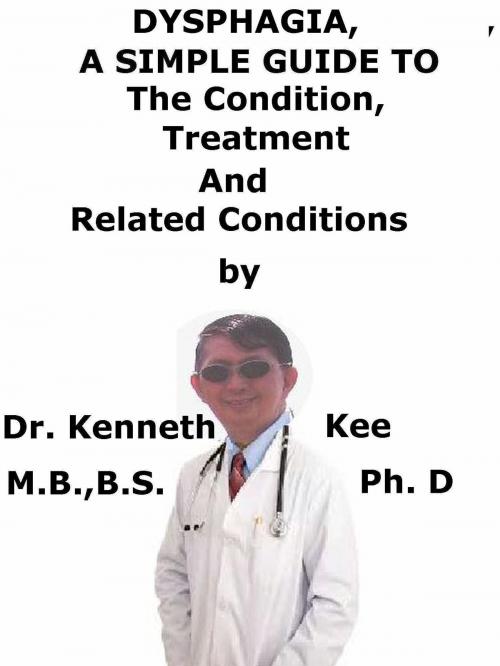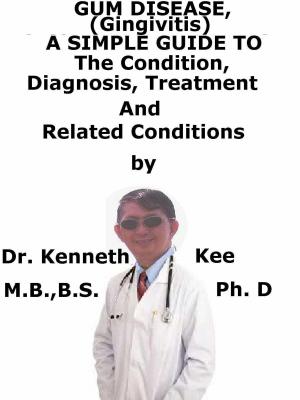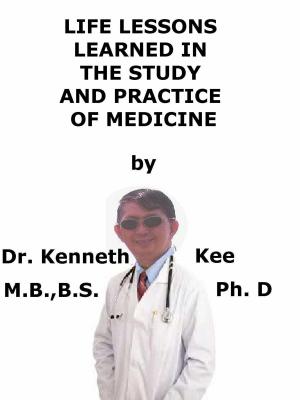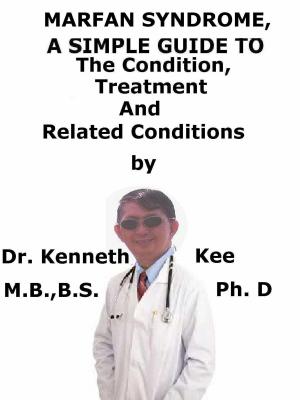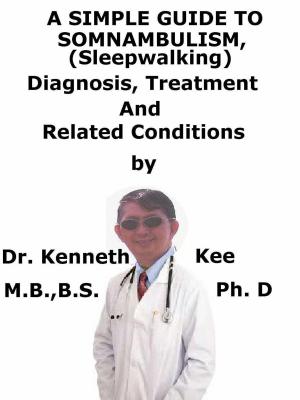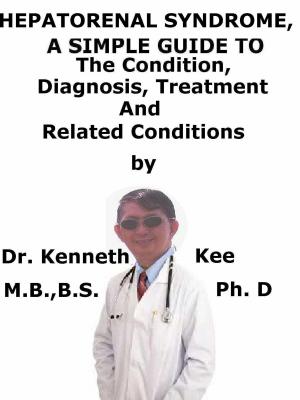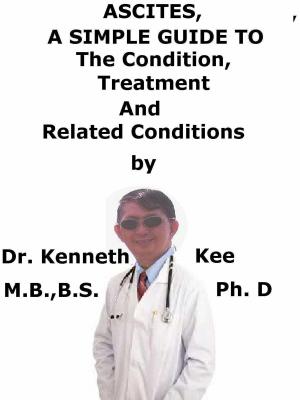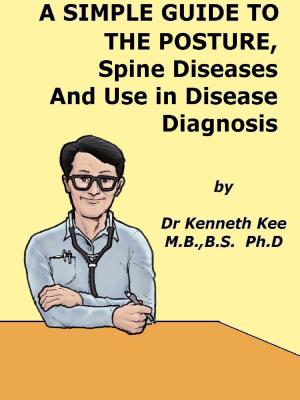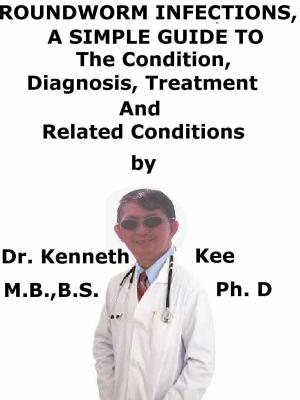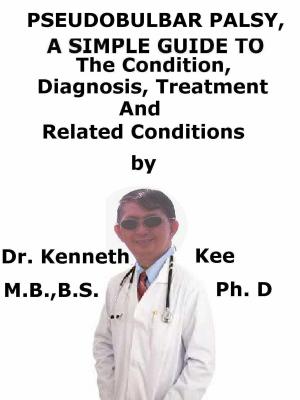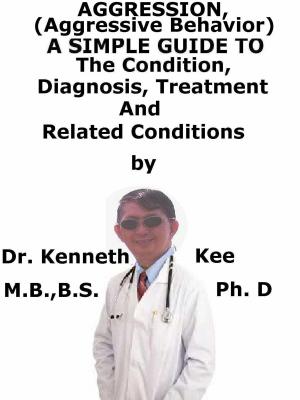Dysphagia, A Simple Guide To The Condition, Treatment And Related Conditions
Nonfiction, Health & Well Being, Medical, Specialties, Internal Medicine, Gastroenterology, Health, Ailments & Diseases, Abdominal| Author: | Kenneth Kee | ISBN: | 9781370598632 |
| Publisher: | Kenneth Kee | Publication: | October 20, 2016 |
| Imprint: | Smashwords Edition | Language: | English |
| Author: | Kenneth Kee |
| ISBN: | 9781370598632 |
| Publisher: | Kenneth Kee |
| Publication: | October 20, 2016 |
| Imprint: | Smashwords Edition |
| Language: | English |
Dysphagia is defined as difficulty in swallowing.
It is usually associated either with pharyngeal or esophageal disease
There is a spectrum of possible etiologies from self-limiting illness e.g. tonsillitis to carcinoma.
It may occur with odynophagia - painful swallowing.
It occurs in 1-2/100,000, most commonly seen in mid-adult life and is caused by impaired neural control of the distal esophagus.
Several conditions can cause dysphagia.
In children it is often due to:
1. Physical malformations,
2. Conditions such as cerebral palsy or muscular dystrophy
3. Gastroesophageal reflux disease (GERD).
Dysphagia in adults may be due to tumors (benign or cancerous), conditions that cause the esophagus to narrow, neuromuscular conditions, stroke, or GERD.
It can also be caused when the muscle in the esophagus does not relax enough to let food pass into the stomach.
Other risk factors include smoking, excessive alcohol use, certain medications and teeth or dentures in poor condition.
A. Obstructive causes:
1. Gastro-oesophageal reflux ± stricture.
2. Other esophagitis (e.g. infection).
3. Esophageal cancer.
4. Gastric cancer.
5. Pharyngeal cancer.
6. Post-cricoid web (Paterson Brown-Kelly syndrome).
7. Esophageal rings.
8. Foreign body (acute).
B. Neurological Causes
1. Cerebrovascular event or brain injury.
2. Achalasia.
3. Diffuse esophageal spasm.
4. Syringomyelia or bulbar palsy.
5. Myasthenia gravis.
6. Multiple sclerosis.
7. Motor neurone disease.
8. Myopathy (dermatomyositis, myotonic dystrophy).
9. Parkinson's disease and other degenerative disorders.
10. Chagas' disease.
Steady worsening of dysphagia over a few weeks in an older patient suggests malignancy.
Men with new onset of alarm symptoms (loss of weight with worsening dysphagia) have an increased likelihood of a diagnosis of cancer, especially in those aged over 65
A positive predictive value of 9.0% has been found in this age group.
The most common lesions within the esophagus are inflammatory strictures from reflux or tumors.
In esophageal manometry, a tube is inserted into the stomach to measure pressure differences in various regions.
X-rays of the neck, chest, or abdomen may be taken.
Barium swallow and endoscopy with biopsy should be performed.
In a barium x-ray, moving picture or video x-rays are taken of the esophagus as you swallow barium, which is visible on an x-ray.
MRI scanning may also be required before any surgery is considered, e.g. if there is esophageal carcinoma.
Videofluoroscopy is the radiological investigation of choice when 'difficulty swallowing' rather than 'food sticking' is the presenting symptom and aspiration is suspected.
Esophageal motility studies (require swallowing a catheter containing a pressure transducer) are useful when esophageal spasm is suspected.
The patient may need to chew well or liquidize food.
Definitive treatment depends on cause - usually endoscopic dilation (either using bougies or inflatable balloon).
In esophageal carcinoma, palliative relief of dysphagia can be achieved with repeated dilatation, stent replacement, laser photocoagulation and injection of sclerosants.
Surgical myotomy and endoscopic injection of the sphincter with botulinum toxin is occasionally used
TABLE OF CONTENT
Introduction
Chapter 1 Dysphagia
Chapter 2 Interesting Facts of Dysphagia
Chapter 3 Treatment of Dysphagia
Chapter 4 Stroke
Chapter 5 Parkinson's Disease
Chapter 6 GERD
Chapter 7 Tonsillitis
Epilogue
Dysphagia is defined as difficulty in swallowing.
It is usually associated either with pharyngeal or esophageal disease
There is a spectrum of possible etiologies from self-limiting illness e.g. tonsillitis to carcinoma.
It may occur with odynophagia - painful swallowing.
It occurs in 1-2/100,000, most commonly seen in mid-adult life and is caused by impaired neural control of the distal esophagus.
Several conditions can cause dysphagia.
In children it is often due to:
1. Physical malformations,
2. Conditions such as cerebral palsy or muscular dystrophy
3. Gastroesophageal reflux disease (GERD).
Dysphagia in adults may be due to tumors (benign or cancerous), conditions that cause the esophagus to narrow, neuromuscular conditions, stroke, or GERD.
It can also be caused when the muscle in the esophagus does not relax enough to let food pass into the stomach.
Other risk factors include smoking, excessive alcohol use, certain medications and teeth or dentures in poor condition.
A. Obstructive causes:
1. Gastro-oesophageal reflux ± stricture.
2. Other esophagitis (e.g. infection).
3. Esophageal cancer.
4. Gastric cancer.
5. Pharyngeal cancer.
6. Post-cricoid web (Paterson Brown-Kelly syndrome).
7. Esophageal rings.
8. Foreign body (acute).
B. Neurological Causes
1. Cerebrovascular event or brain injury.
2. Achalasia.
3. Diffuse esophageal spasm.
4. Syringomyelia or bulbar palsy.
5. Myasthenia gravis.
6. Multiple sclerosis.
7. Motor neurone disease.
8. Myopathy (dermatomyositis, myotonic dystrophy).
9. Parkinson's disease and other degenerative disorders.
10. Chagas' disease.
Steady worsening of dysphagia over a few weeks in an older patient suggests malignancy.
Men with new onset of alarm symptoms (loss of weight with worsening dysphagia) have an increased likelihood of a diagnosis of cancer, especially in those aged over 65
A positive predictive value of 9.0% has been found in this age group.
The most common lesions within the esophagus are inflammatory strictures from reflux or tumors.
In esophageal manometry, a tube is inserted into the stomach to measure pressure differences in various regions.
X-rays of the neck, chest, or abdomen may be taken.
Barium swallow and endoscopy with biopsy should be performed.
In a barium x-ray, moving picture or video x-rays are taken of the esophagus as you swallow barium, which is visible on an x-ray.
MRI scanning may also be required before any surgery is considered, e.g. if there is esophageal carcinoma.
Videofluoroscopy is the radiological investigation of choice when 'difficulty swallowing' rather than 'food sticking' is the presenting symptom and aspiration is suspected.
Esophageal motility studies (require swallowing a catheter containing a pressure transducer) are useful when esophageal spasm is suspected.
The patient may need to chew well or liquidize food.
Definitive treatment depends on cause - usually endoscopic dilation (either using bougies or inflatable balloon).
In esophageal carcinoma, palliative relief of dysphagia can be achieved with repeated dilatation, stent replacement, laser photocoagulation and injection of sclerosants.
Surgical myotomy and endoscopic injection of the sphincter with botulinum toxin is occasionally used
TABLE OF CONTENT
Introduction
Chapter 1 Dysphagia
Chapter 2 Interesting Facts of Dysphagia
Chapter 3 Treatment of Dysphagia
Chapter 4 Stroke
Chapter 5 Parkinson's Disease
Chapter 6 GERD
Chapter 7 Tonsillitis
Epilogue
